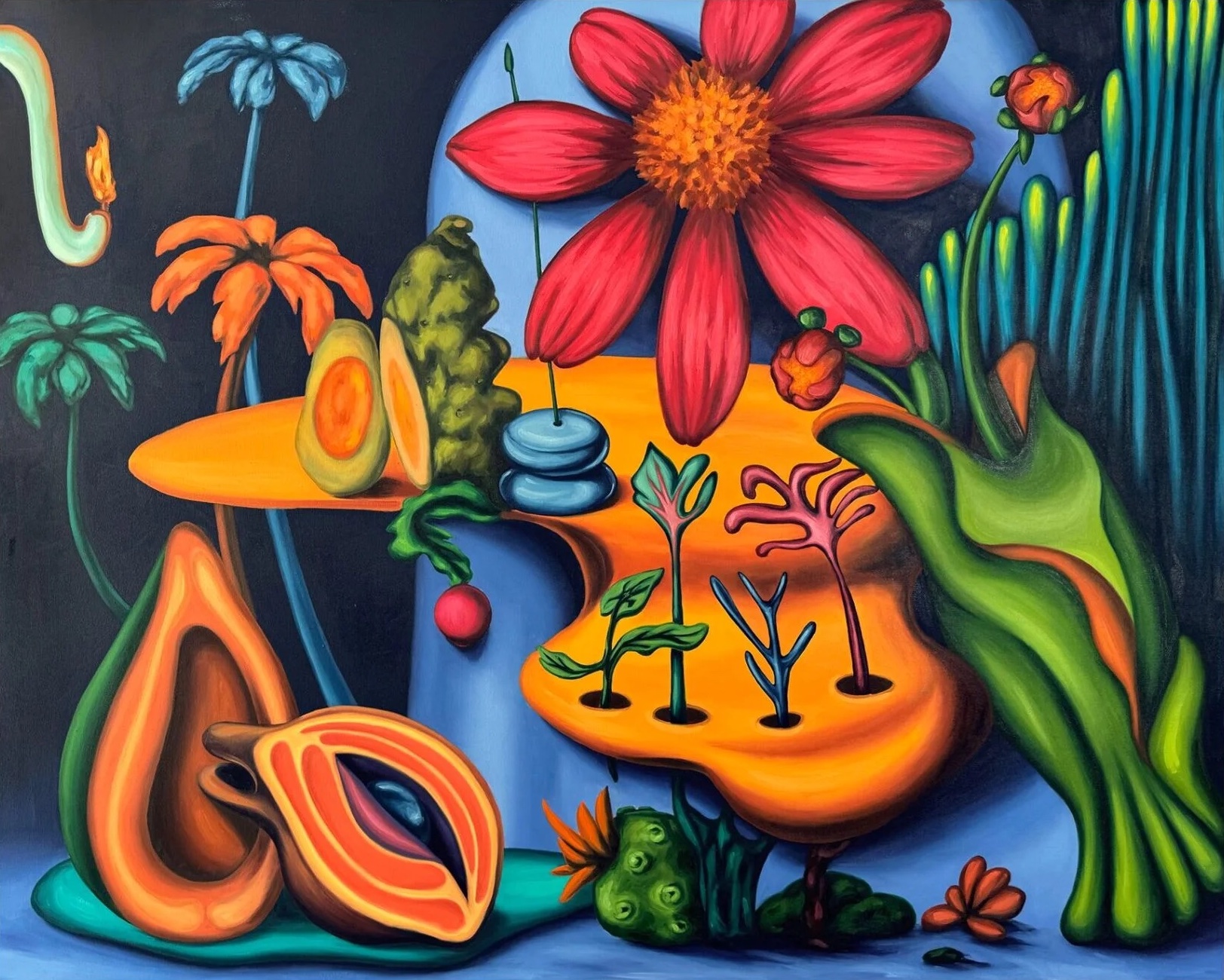
Review
Sacred Fruit, Profane Flower: Kora Moya Rojo at Daniela Elbahara
by Fernanda Ballesteros
Reading time
4 min
…the body being in calm repose,
a cadaver with a soul,
dead to life and alive to death…
Primero Sueño, Sor Juana Inés de la Cruz
Without asking, they wrapped you in snowy robes and soaked you in holy water; your head large and your body bulging. You wept, for crying, laughing, and grimacing were your only languages. They drew the cross between your forehead, your shoulders, and your mouth until you learned to put your thumb and forefinger together to form the cross and kiss it yourself. With your two hands, you took the white flowers that the adults gave you to cross the aisle. The flowers were so big, they exceeded your hair combed with gel, yours and your classmates'. You, in dresses, socks, and polished shoes, walked in line to the altar to your Mother, the Virgin. Perfume, songs, stained glass, love, peace, hope: a mixture that brought, in your little naive heart, the sensation of an unlimited home, of a family destiny, of eternal protection.
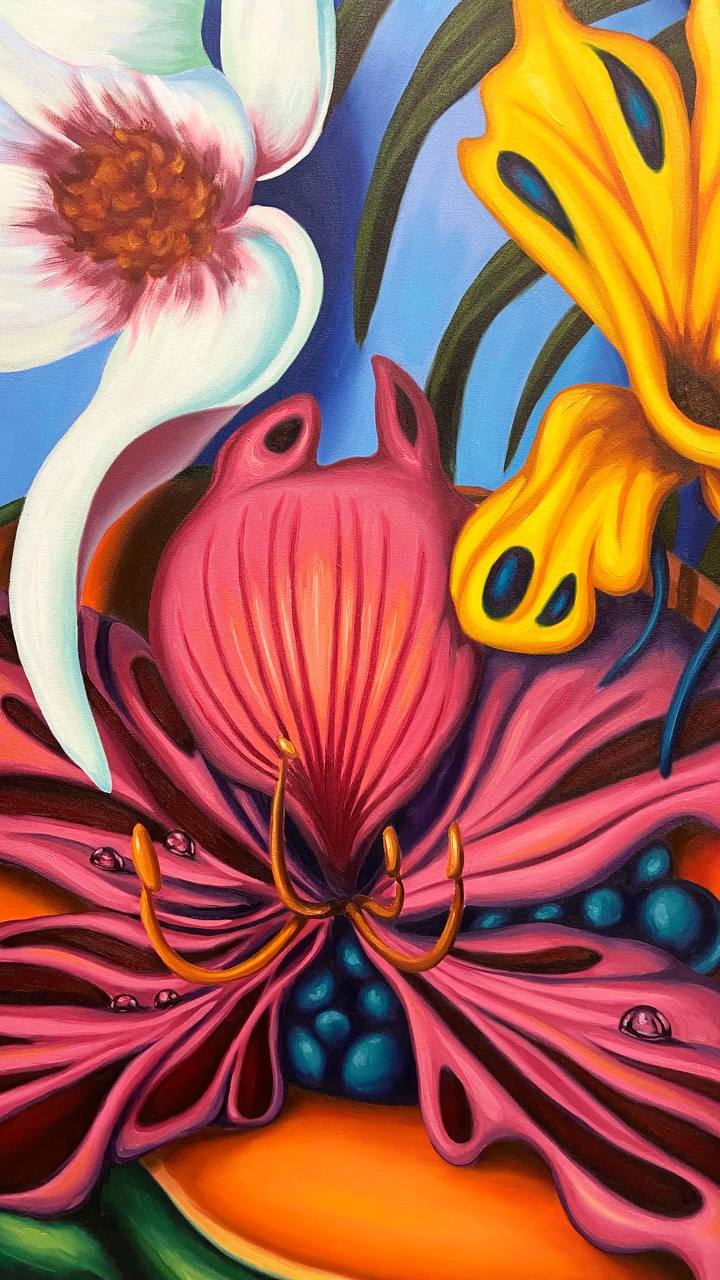
How do you divorce the soul from the river where it drank and swam since the discovery of its body? What is the void that remains when separating yourself from a religion? How do you remain united with that community without following the norms? How do you build your own norms? What is required for a rite for it to really be a rite? What do you need it for? How do you now nourish the transparent mass that inhabits you and that unites your self, according to you, to the infinite, to the cosmos, or to the shifting depths that breathe in the cycle of life and death?
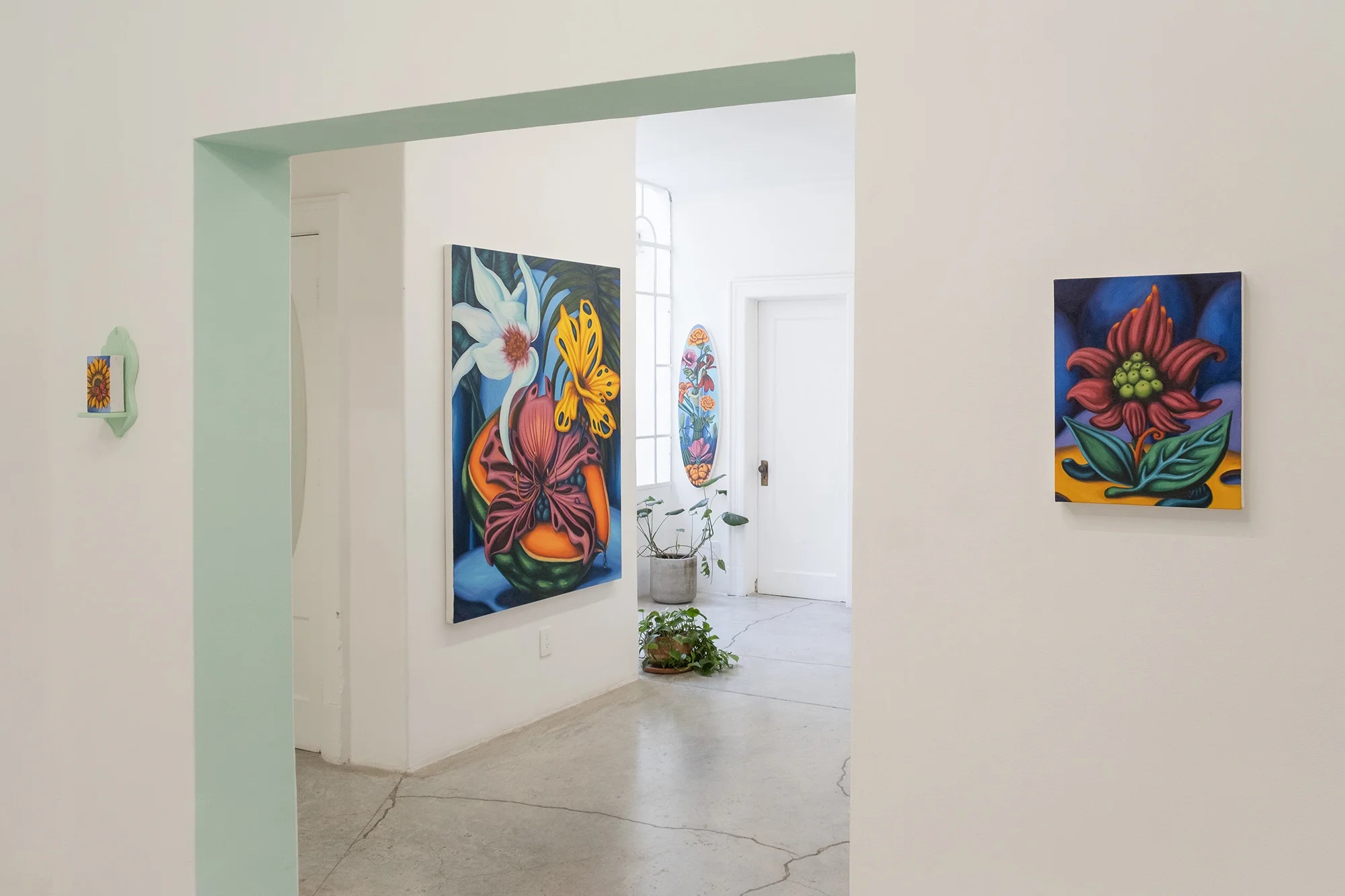
Kora Moya Rojo explores these questions through her own offerings: gigantic fruits, flowers like wings, colors that pulsate like pupils of fire, incense embedded in edible skins or in the earth. They are large oil paintings that surpass Kora's braided red hair. Either very large or very small. Kora also explores the intimacy that comes with the small, the detail and magic of the amulet in six altars reminiscent of those found hidden in the hollows of tree trunks in Mexico City. Each of the altars is packed with Teotihuacan flowers, the four-petaled ones, like those on Our Lady of Guadalupe’s mantle. There are more traces of Her, in the cacao and its oval shape; which is repeated in the idea of the portal. Kora paints offerings in front of mirrors: gantries for spirits and their travels.
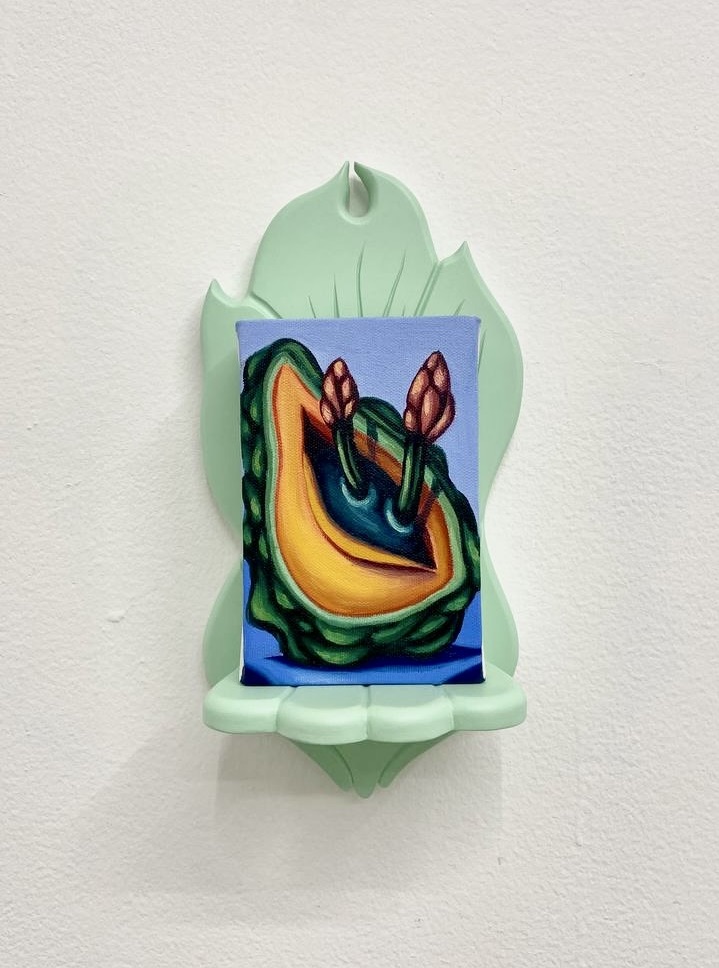
The flame of the candle floats, powerful only in the darkness. Kora's backgrounds are dark, mystical. She uses pictorial silence to let living souls flow in fruits and flowers, in leaves that twist or inhabit spaces that allude to those of Luis Barragán, with the use of tonalities, contraction, dilation, and shadows to acquire a continuity, a weaving between the exterior and the interior, between nature and home.
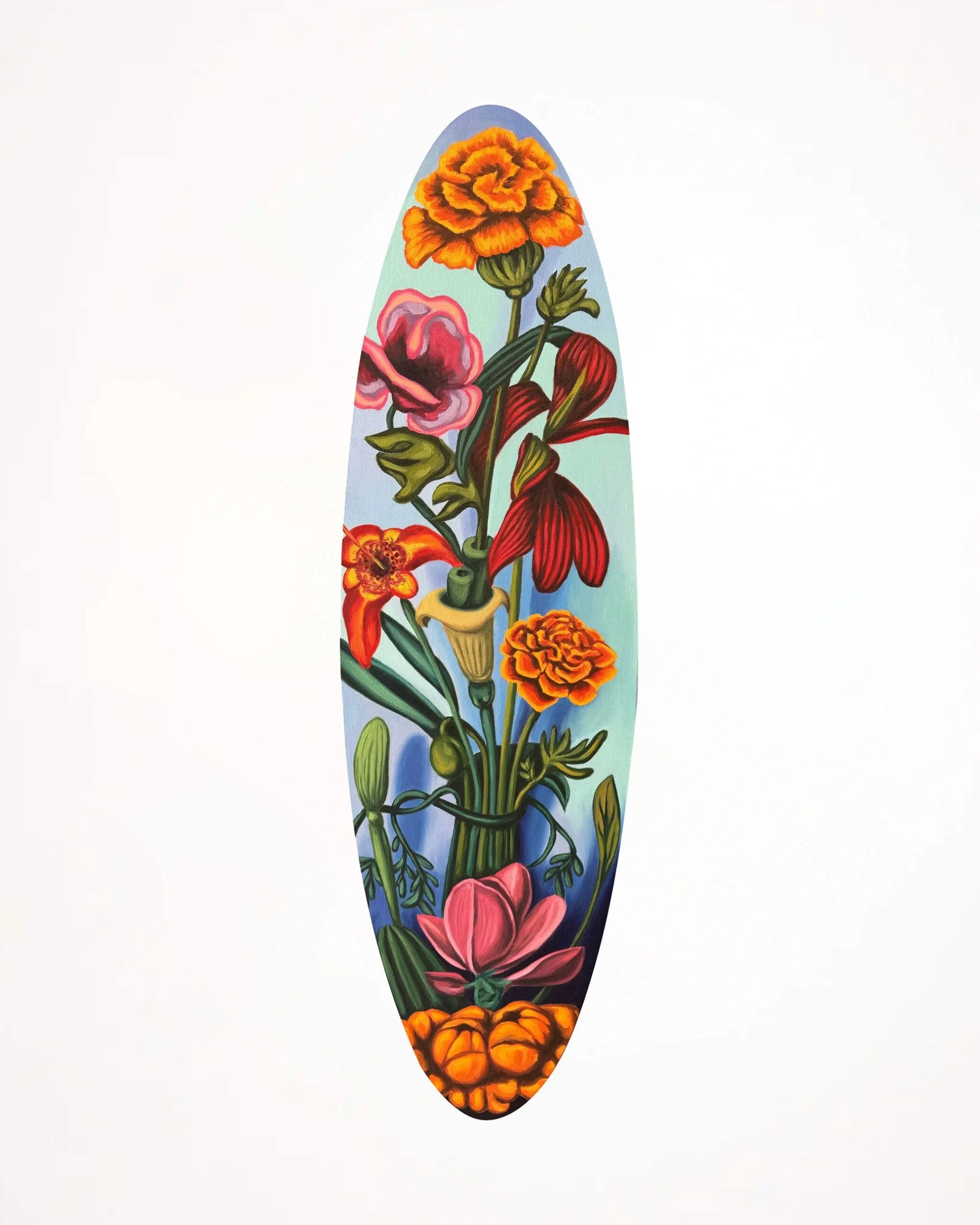
What is the border between the sacred and the profane? Émile Durkheim (1858-1917) says that the sacred is any confrontation with spiritual powers from an intense affective relationship that leads to a loss of self-control; a state where understanding no longer matters, where some faith takes you by the feet to turn you upside down and reveal a new perspective of reality from the transparent fields of the mystical. The sacred, he says, is at the origin of the formation of all ideals, and these may or may not be within religions.
Kora Moya Rojo found her blessed river in Mexican nature. Prickly pears, papayas, marigolds, mameys, hybrids: a mixture that brings, to her Spanish heart, the sensation of an unlimited home, of a family destiny, of eternal protection.
Translated to English by Luis Sokol
Published on May 30 2024